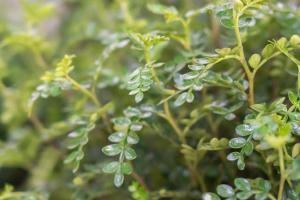What is Digging in My Potted Plants?
If you are an avid fan of gardening, having potted plants can be a great way to add beauty to your home. But what happens when you notice some signs of damage in your potted plants? You may start to wonder what is digging in your potted plants and causing the damage. In this article, we will explore the common reasons for this and some tips on how to prevent it from happening.
Identifying the Culprit
Before we can start thinking of prevention measures, we need to identify the possible culprits that may be digging in our potted plants. The most common culprits are insects, rodents, and other small animals. Insects such as grubs, caterpillars or beetle larvae may feed on the roots of the plant and cause damage. Rodents or squirrels may dig in the soil in search of food, while other small animals like moles or voles may tunnel through the soil.
If you are unsure about what is causing the damage to your potted plants, take a closer look at the soil. If you notice tunnel holes, it may indicate the presence of moles or voles. If you see gnaw marks on the plant or soil, it may indicate the presence of rodents such as mice or rats. If you see insects in the soil, it may indicate the presence of larvae, grubs or caterpillars.
Preventing Damage to Your Potted Plants
Once you have identified the culprit, you can take steps to prevent further damage to your potted plants. Here are some tips:
Use Pest Control
The easiest way to prevent further damage to your potted plants is to use pest control. You can use insecticides or rodenticides specifically made for outdoor use. This will help eradicate the pests that are causing damage to your plant. However, be careful when using pesticides as they may harm beneficial insects that are part of your garden ecosystem.
Use Physical Barriers
Another way to prevent damage to your potted plants is to use physical barriers. This can include covering the soil with wire mesh or gravel to prevent rodents from digging in the soil. You can also use fencing around the plants to prevent larger animals from accessing them.
Repellent Plants
Finally, you can use repellent plants to help deter pests from your potted plants. Plants like mint, lavender or citronella have natural repellent properties that can keep pests away. You can place these plants near your potted plants to create a natural barrier.
In Conclusion
Overall, it can be frustrating to see damage in your potted plants. However, with the right identification and prevention measures, you can keep your plants healthy and beautiful. Remember to use pest control, physical barriers, and repellent plants to create a healthy and thriving environment for your potted plants.

 how many times do yo...
how many times do yo... how many planted tre...
how many planted tre... how many pine trees ...
how many pine trees ... how many pecan trees...
how many pecan trees... how many plants comp...
how many plants comp... how many plants can ...
how many plants can ... how many plants and ...
how many plants and ... how many pepper plan...
how many pepper plan...
































